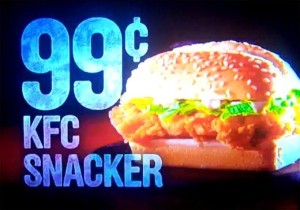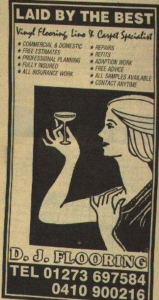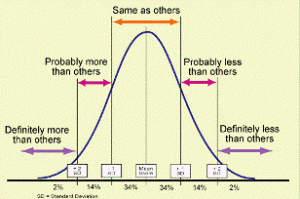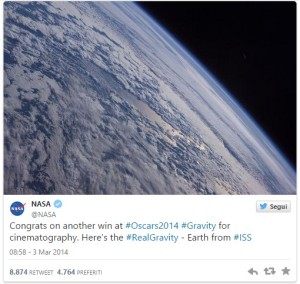Overview
The pharmaceutical industry in the United States and the EU region is a $600 billion industry. Consequently, drug companies spend over $6 billion annually in simply sending their representatives to doctors to provide samples, answer queries on use, disseminate product information, and thereby, convince them to prescribe their product.
Take for instance the US pharmaceutical industry; the patient is the consumer, the insurance companies are the payers, but the decision makers are the 830,000 prescribers in this market. The US pharmaceutical companies employ over 81000 sales reps to target these prescribers.
This presents its own operational and financial challenges. A rep can cost a company upwards of $100,000 and it is imperative that the company optimizes the sales force for maximum effectiveness. A host of operational challenges then come into play, around the domains of physician segmentation, targeting, call planning, sales force size & structure, sales force effectiveness management, and incentive compensation.
This article focuses on the key concept of salesforce sizing, and talks about the different tactics that can be employed by the firm at each stage during the sizing exercise. The final optimal size will be the one that most closely complements the strategy employed by the company
Strategic Choices before Sizing – Prescriber Segmentation & Targeting
The analysis for the right size is not an independent activity but rather a step in a process that begins with prescriber segmentation and targeting. The size is a reflection of the strategic choices made in the segmentation and targeting stage.
Let us take a simple example of this – Imagine there are two Diabetes drug manufacturers, which have ranked the physicians in the decreasing order of prescription value. The first decides to target only the first 10% with many sales calls whereas the second targets the top 60% with fewer sales calls. Consequently, there needs for salesforce will be vastly different.
Of course, this is a very simplistic scenario and the true situation is generally vastly more complex. In this section, we will explore a little more about an advanced segmentation process, and targeting choices
Segmentation
Segmentation of the market allows you to optimize your sales calls by segregating them into buckets, which have a differential amount of effort required. There are several tactics that can be used while performing segmentation. Three of the broad segmentation tactics are as follows:
- One-Dimensional – This type of segmentation focuses only on one dimension, mostly potentia”. This means that for each of my customers, I categorize them into buckets on the basis of how much value they generate. This simplistic form of segmentation is only useful when there is a lack of data, or it is a very nascent or new market with no history of prescription of the drug.
- Two-Dimensional – This type of segmentation brings in the added element of Penetration. Penetration is simply the market share of value commanded by our drug for each physician, i.e. a physician generating 80% of his prescriptions to our firm is a high-penetrated prescriber as compared to one generating only 20% of his prescriptions. The segmentation can be visualized as a matrix, with each physician occupying a segment in the matrix.
- Three-Dimensional – As our understanding of our customers increase, several other dimensions, including accessibility, adoption sequence, etc. These factors can influence the relative position of a customer on the 2×2 matrix, and thus the umbrella dimension “Ability to Win” acts as an override in the matrix.
Targeting
Now, once we have performed our segmentation, the tactical decisions on targeting need to be made, specifically on – who to target and how much to target. Let us assume that our segmentation results look something like this.
Each dot represents a prescriber. The first question to be answered is who to target. We generally segregate our customers as Defend, Maintain, Conquer and Non-focus. Our top customers are the ones who are on the top-right box. They are high-potential customers that are highly penetration, and must be defended from competitors. On the contrary, the bottom right customers are low-potential, with low-penetration, and therefore should not be focused on. A complete analysis of this is in the diagram below.
Now that we have segregated our customers, we turn to how to target them, i.e. what is the sales effort required for each customer in a segment. Share-of-Voice is an important benchmark while deciding sales effort. Our effort vis-à-vis our competitors is a function of how aggressive our strategy is. That being said, there is still a differential amount of effort that should be put across different segments:
| Conquer
High amount of effort required. Typically much more than the next competitor. Range of 10-15 calls a year |
Defend
Medium effort required. General reminder calls to defend market. Can be ramped up if competitors are aggressive Range of 8-12 calls a year |
|
Non-focus Marginal or no effort required Range of 0-2 calls a year |
Maintain
Low effort required. Range of 2-6 calls a year |
The output of this Segmentation and Targeting Exercise looks something like this below. This below is an example of a 3-dimensional segmentation with a 3×3 matrix and overriding factors (Ability-to-win). The different cells of the matrix have been assigned strategic tactics based on their potential and penetration.
Salesforce Sizing Methodologies
The previous section gave a broad overview of how the strategic choices are made prior to the actual sizing exercise. At the moment, we have chosen a set of tactics conforming to our overall strategy. We now take it forward to create the optimal salesforce to execute it.
There are several methodologies to sizing. These range from:
- Status Quo – Maintain the same as last year
- Chase the Leader – Have the same or more Share-of-Voice as the market leader
- Workload Buildup – Workload Quantification Model
- Profitable Coverage – Effort vs. Reward from an Incremental Sales Call
- Sales Response – Optimize law of diminishing marginal returns on sales calls
Our focus will be on the most commonly used techniques on Workload Buildup and Profitable Coverage.
Workload Buildup
The workload buildup is a simple quantification model that calculates the total effort required based on our segmentation results, assumes a rep capacity, and thus, computes the total number of reps required.
The inputs required in this model are:
- Targeted Segments and Number of customers in each segment
- Coverage %age in each segment
- Number of calls per customer in each segment
- Field force capacity, i.e. Days worked x Calls per day
A simple illustration would be as follows
| Segments | Customers | Coverage %age | Calls / customer per year | Total Calls per segment per year | Total Calls |
| Defend | 2000 | 100% | 8 | 16000 | 128000 |
| Maintain | 4000 | 50% | 4 | 16000 | |
| Conquer | 8000 | 100% | 12 | 96000 | |
| Non-Focus | 6000 | 0% | 0 | 0 |
If a rep can make 6 calls a day working 200 days a year, then the rep capacity is 1200 calls/year. Consequently, we would need, 128000/1200 = 109 reps approximately.
As we see, the workload buildup model uses a very erroneous assumption. It assumes that within a segment, every customer is equal. This is a very dangerous assumption and consequently the workload buildup is used as a first pass in sizing, or forecasting exercises for financial projections.
Profitable Coverage
We saw that the basic problem with the workload buildup was that all customers in a segment were assumed equal. The profitable coverage model solves that problem by calculating the incremental return of targeting another customer in a segment versus the incremental cost of salesforce effort associated with it. The profitable coverage model has the advantage of giving us the recommended coverage as an output rather than us estimating it.
The inputs that would be required in this model are: 
- Value generated by each customer
- Field force cost
- Field force capacity
- Calls per segment
- Target profitability
Step 1: The first step involves calculating the cost of effort.
Cost of Effort = Fieldforce cost / Fieldforce capacity.
If it costs a firm $100,000 to hire, train and deploy a rep per year, who goes on to make 500 calls in the year, then the cost of effort is $200.
For each segment, we can calculate the cost of effort by multiplying the cost per call and the calls per segment.
Step 2: Based on our target profitability, we can then calculate what should be the minimum profit generated from a customer to consider make it viable to target them.
We set our target profitability for our valuable segments i.e. Defend, and Conquer, low because we would like to ensure maximum coverage in these areas. The maintain segment, however, is not very important and we can afford to lose coverage in this segment. Consequently, our target profitability should be higher in this segment.
| Segments | Customers | Calls / customer per year | Cost of Effort ($) | Target Profitability | Minimum Threshold of Return |
| Defend | 2000 | 8 | 1600 | 0% | 1600 |
| Maintain | 4000 | 4 | 800 | 50% | 1200 |
| Conquer | 8000 | 12 | 2400 | -50% | 1200 |
| Non-focus | 6000 | 0 | 0 | 100% | 0 |
Step 3: Compare the threshold of return with actual profits generated by each customer. The coverage percentage in each segment is calculated by the total number of customers crossing the threshold as compared to the total number of customers in the segment.
Step 4: The coverage percentages are input back into a simple workload buildup to calculate the optimal salesforce.
The profitability coverage model introduces the complexity of differential sales returns in a segment. In the absence of customer-level data, this model uses mathematical constructs such as modified pareto-curves (logarithmic) to simulate the sales distribution in the segment.
At the close of our analysis, a note of caution is required. While it is possible to mathematically right-size the salesforce with ease, reality offers a very different situation. The salesforce, like any other human resources, cannot be frequently reshuffled to adjust to changing forecasts and strategies. The actual size at the end of the process will have to incorporate several other operational, legal, and emotional variables.
The strategic decision to right-size is therefore taken with a horizon of atleast 3-5 years in mind to ensure that a constant turmoil in the salesforce does not lead to a potentially hostile workforce.
R Bharat Kumar is a PGP student (2014-16) in IIM Ahmedabad










 .
. However despite all these, we customers are not relieved but feel a different kind of stress, for lack of a better word I would call it “time pressure which is independent of time but not of place or space” because suddenly the place for transaction has turned into a place for experience with the pervasiveness of e-commerce apps on smartphones, unpredictable timing for offers and unbelievable range of discounts.
However despite all these, we customers are not relieved but feel a different kind of stress, for lack of a better word I would call it “time pressure which is independent of time but not of place or space” because suddenly the place for transaction has turned into a place for experience with the pervasiveness of e-commerce apps on smartphones, unpredictable timing for offers and unbelievable range of discounts.
 I am still trying to figure out which is more important; winning or owning? If we think about life, though many manage to win our heart, as time progresses ultimately only one owns it…:).
I am still trying to figure out which is more important; winning or owning? If we think about life, though many manage to win our heart, as time progresses ultimately only one owns it…:).





